Playing Card Toppling
A largely forgotten game
I suppose that everyone reading this blog is familiar with the game known variously as Domino Run, Domino Rally, or, more generically, as domino toppling. Although it is a simple game, and thus potentially of great age, there appears to be little (if any) evidence for its existence prior to 1976 (although see comments below). This may be, perhaps, because the necessary research has not been done, or it may be that, although the game existed, it had not previously been played with dominoes, but with folded playing cards.
The clearest evidence for the playing of this game with folded cards comes from this print by Ernesto Torrini (of unknown date, but probably late 19th century). In this case what is happening is perfectly obvious, but in other cases it is not always easy to know if the playing cards are being set up as the foundation of a card castle (see my previous post Castles from Playing Cards) or being lined up for toppling.
For instance, in this painting by Jean-Baptiste Simeon Chardin from c1735/7, a child is shown building a card castle by the tower method. This does not require folded cards, but three folded cards also stand (or lie) on the table. Are these the remnants of a game of playing card toppling (the other cards having previously toppled off the table onto the floor)? Or is the child also intending to build a second card castle by the column method?
Stray folded playing cards also turn up in other pictures. Here, for instance is a detail from 'La Gouvernante', again by Jean-Baptiste Simeon Chardin, which can be dated to c1738.
And here is a similar detail from a portrait of Louis-Philippe-Joseph duc de Montpensier, later the duc d’Orléans, by François Boucher (1703 to 1770), which can be dated to 1749.
Fortunately for my argument, there is one quite early painting, by Johann Ernst Heinsius, and said to date from 1781, where it does seem clear that the cards are being set up in a long line for toppling.
A line of toppling cards also appear in this detail from a famous cartoon, the 'Armes du Grand Poulot', which was published in the French satirical magazine 'La Caricature' in January 1832. (I am not quite sure whether the bayonets have some symbolic meaning, or whether, at this time, children did add tiny bayonets to their folded cards so that they resembled infantry.)
After this, however, evidence of playing card toppling in this pure form (just using cards folded lengthwise) is thin on the ground. There is the Ernesto Torrini print shown above, and not much else. Does this mean the game went out of fashion, or was it simply not sufficiently interesting to be worth mentioning in books of, or about, children’s games?
Certainly, the original single-line toppling game (whether forgotten or not) seems to have been radically transformed when, in 1976, according to Wikipedia, the American, Bob Speca, set up and toppled 11,111 dominoes to establish the first official world record. Dominoes proved capable of toppling in much more interesting ways than folded cards ever could.
And the rest, as they say, is history …
PS. My grateful thanks to Juan Gimeno for locating the Ernesto Torrini print.


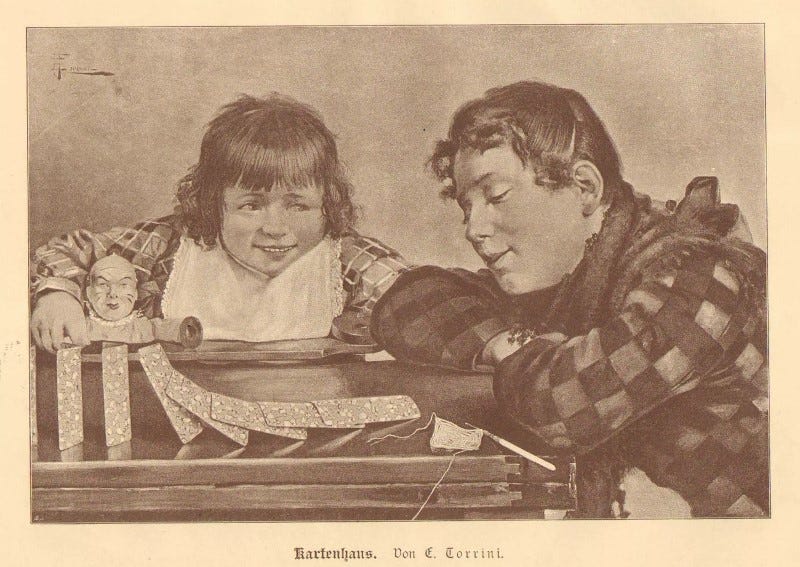
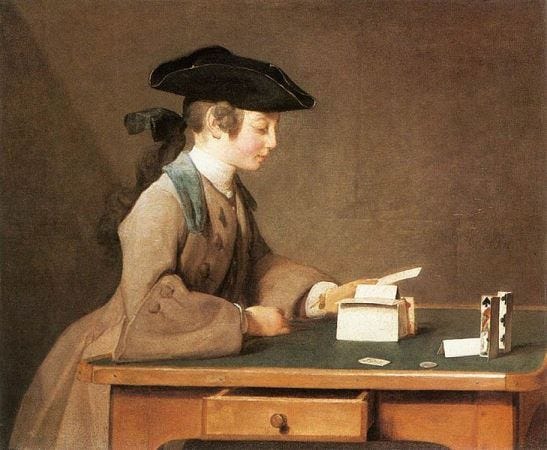
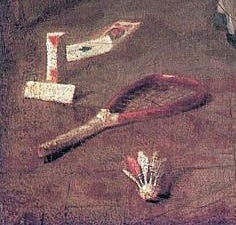

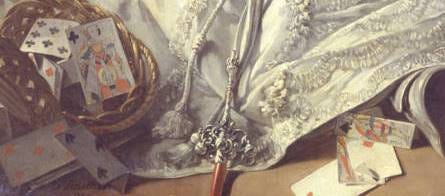


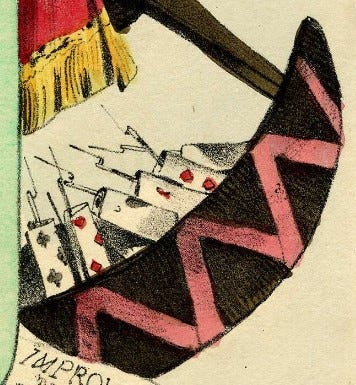
No, not a typo. I just couldn't find any earlier (written) evidence. I would imagine there must be some ... but where? You may remember the game from the early 1960s but I don't remember it from my childhood (the 1950s). Was I just deprived by not being allowed dominoes to play with?
P.S. In trying to find the Tissandier reference online I stumbled across a Tom Tit illustration for sale at https://www.oldiesbutgoldies.paris/product-page/illustration-sur-les-cartes-%C3%A0-jouer . And that reminded me in turn of the domino structures in one of the Tissandier or Tom Tit books. Possibly also in Kolumbus-Eier / Columbus Egg - now I'm starting to get confused. Will have to check...